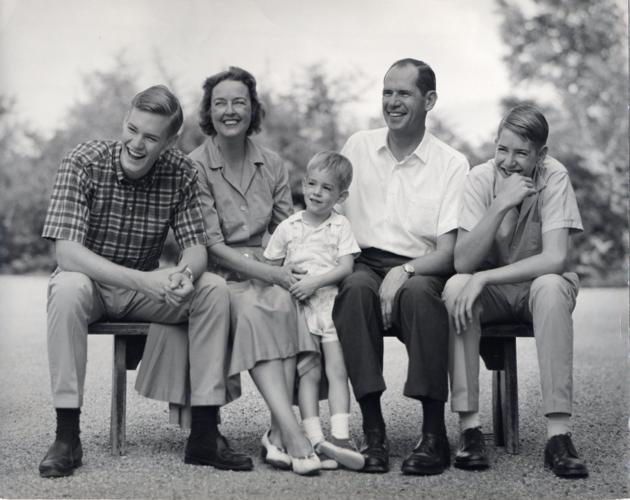Before he was Arizona’s 12th governor, Samuel Goddard Jr. developed a unique midtown-Tucson subdivision.
Goddard, who was born in Clayton, Missouri in 1919, grew up in nearby St. Louis, where his father was vice president of the Goddard Wholesale Grocery Co.
He studied classical history at Harvard University and earned a bachelor’s degree in 1941. His future wife, Julia Hatch, was born in Springfield, Illinois and enrolled at nearby Wellesley College. They married in 1944 and had three sons: Samuel P. “Terry” Goddard III, Pascal H. Goddard and William D. Goddard.
In July 1941, Goddard had enlisted as a private in the U.S. Army Air Corp. The following year he attended Officer Candidate School in Miami and received his commission. During World War II, he served as an operations and communications officer, which allowed him to see parts of England, Canada, India and North Africa. He also met future Arizona senator Barry Goldwater at an air base in Wilmington, Delaware.
In the summer of 1945, Julia Goddard came to Arizona while her husband carried out his next assignment in the South Pacific. During a short leave at Christmas time Goddard joined her and they decided Tucson would be their home. They moved here the following year and bought land along Swan Road, just north of 22nd Street.
The land was the southern half of what had been the 160-acre homestead of Henry C. Dollarhide Sr., for which he had received his patent, or land grant, in 1917. Dollarhide had been born around 1844 in Iowa or Indiana and had lived in many states during his lifetime. In 1910 he was working at a hotel in Santa Cruz County and his son, Henry C. Dollarhide Jr., was living in Tucson. It’s likely the son did much of the work related to homestead since the father was about 73 when he got the land.
The Goddards built a home and began developing the creosote bush-filled desert landscape into a unique subdivision. Firm deed restrictions mandated that the homes be set back from the street and ensured that the neighborhood remain residential. The Aldea Linda subdivision (Spanish for beautiful little village) was recorded with Pima County on Nov. 13, 1947 along with Calle Jabeli, which runs through it.
At the same time Goddard was developing his property, Fred Roberts was developing Loma Linda Estates (Spanish for beautiful hill) just to the east. That subdivision was recorded on Nov. 6, 1947.
Loma Linda Estates offered one-acre and half-acre lots, but Goddard’s lots were even larger.
Land in the subdivision was donated for the Unitarian Universalist Church, which still exists today at 4831 E. 22nd Street.
In 1949, Goddard graduated from the University of Arizona College of Law and later served as a partner with Goddard, Gin, Hanshaw & Gianas in Tucson.
From 1960 to 1962 he was chairman of the Arizona Democratic Party, which eventually led to him becoming the 12th governor of Arizona from 1965 to 1967.
In 1977, the street running through the middle of Aldea Linda was renamed from Calle Jabeli, to Calle Jabali, which means Wild Boar Street.
Goddard remained active in political and civic life for many years after serving as governor. He died in 2006.
His uncommon subdivision continues on as one of Tucson’s unique neighborhoods.







